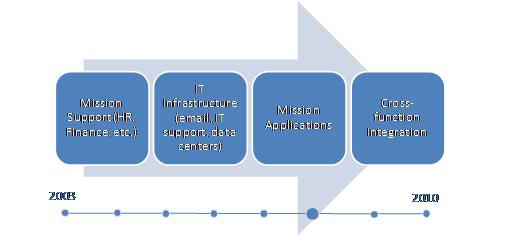The
Evolution
of DHS
Procurements
The Department of Homeland Security (DHS) is turning five years old. It has come a long way in transforming business processes and procuring information technology (IT) solutions since 2003 and the future is getting brighter. We had the opportunity to interview Lynn Ann Casey about DHS’ evolution in how it procures and implements mission solutions.
Q: What is the latest at DHS today? A: It’s all about the mission – and creating new systems to support that mission. DHS has procured infrastructure improvements such as email integration and desktop management. Now the focus is on developing new mission solutions and creating the contract vehicles that support these. For example, USCIS recently awarded a contract for the Verification Information System and ICE is currently procuring the SEVIS II application for students and exchange visitors. Going beyond single application procurements, DHS is creating broader mission application vehicles. TSA recently awarded the OASIS applications development IDIQ contract and FEMA is procuring an application development process and environment. Figure 1 shows the major trends in DHS procurements.
Q: What is challenging about this? A: First, legacy systems are stove-piped and difficult to integrate. Second, new approaches, including Service Oriented Architecture, require investment and technical experience. Third, DHS must introduce new technology that supports a growing mission – without any impact to ongoing operations or systems. Finally, DHS must achieve greater IT governance.
Q: What is next for DHS? A: DHS needs modular, flexible solutions used by multiple agencies, or ‘cross-function integration.’ US-VISIT is an early example. In the future, we’ll see more programs like the joint Integrated Wireless Network that go beyond DHS. Finally, we’ll see new ways of improving technology integration between CBP, ICE and CIS, including an integrated enforcement case management.
 Figure 1 Evolution of Homeland Security Solutions
Figure 1 Evolution of Homeland Security Solutions





















